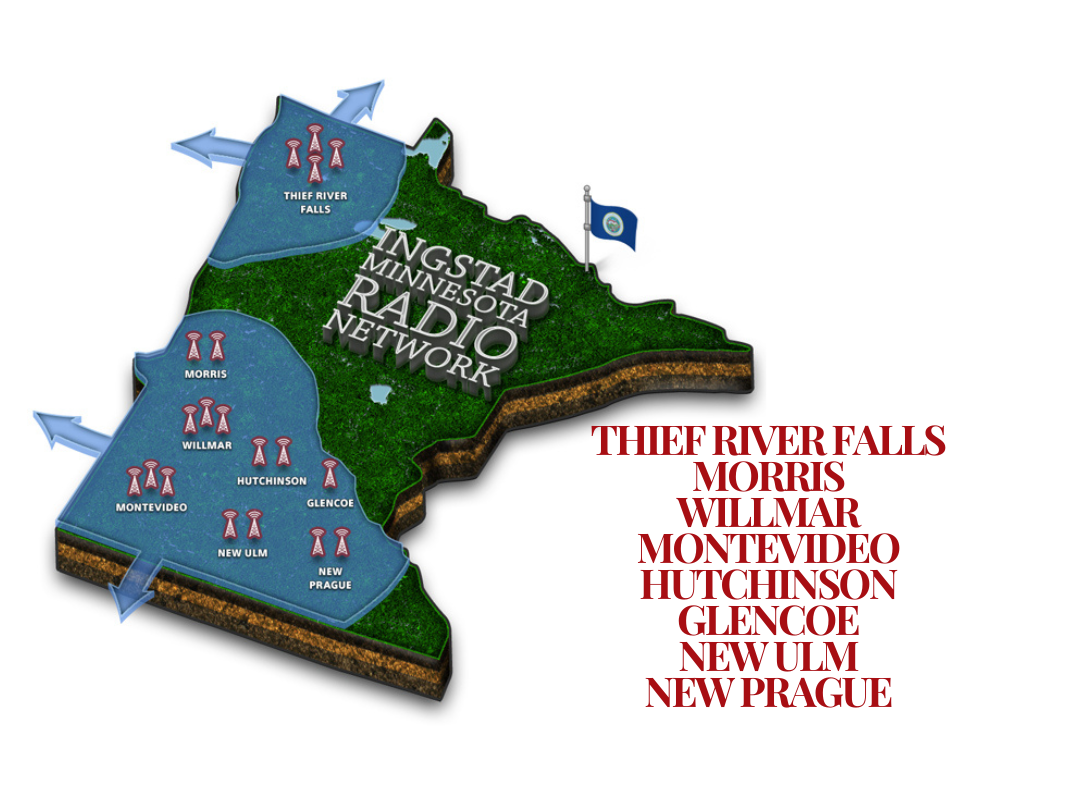Severe Weather Awareness Week – Day 5 – Heat and Wildfires
| Today ends Severe Weather Awareness Week with information about Extreme Heat and Wildfires.
Prepare for the upcoming Severe Weather season! Severe weather normally refers to any dangerous weather event with the potential to cause the loss of life or injuries, significant damage to structures, or any other serious disruption to communities. Forms of severe weather events vary but all types can be potentially hazardous. Storms, including tornadoes, high winds, hail, lightning or flooding, are the most common types in Minnesota. But severe weather can include excessive heat and drought conditions that can spark wildfires can be dangerous as well.
While severe weather can’t be prevented, there are some simple steps everyone can take to stay safe and protect themselves and their homes whenever severe weather threatens. The pages in this section offer some basic awareness information, safety tips and links to additional resources about the most common spring and summer weather hazards. In addition to weather information, there are also guides on basic emergency preparedness for individuals, families, businesses and communities. Using this site as a guide, learn how to make a plan, build an emergency kit, and stay informed. |
|
Be prepared for wildfires throughout this dry spring
Firefighters work to put out a wildfire in Waseca County. Photo courtesy of the Waseca County Pioneer.
A wildfire in Waseca County raced through nearly 2,000 acres during the first weekend of March, forcing several residents to evacuate. This fire, which hurt three people, was just one of more than 70 across the state so far this year.
With Minnesota’s wildfires getting an early start on the season — which predicted to be unusually active — public safety teams are increasing their preparedness levels to match the need. The real-time response is only part of the planning. The Department of Public Safety (DPS) and our partners’ proactive work is also paying off. Learn more in our latest DPS blog.
Heat Waves Kill
According to the Department of Health (MDH), between 2000 to 2016, 54 deaths were directly attributable to extreme heat in Minnesota. On July 19, 2011, an all-time heat index record was set in Minnesota. The air temperatures was 93 degrees Fahrenheit and the heat index reached 130 degrees Fahrenheit in Moorhead.
The National Weather Service (NWS) places high priority on alerting the public to heat wave hazards. Additionally, the MDH has developed an Extreme Heat Toolkit with communications and public-health planning strategies to prevent heat-related illnesses and deaths.
The toolkit is available on MDH’s website.
NOAA’s Watches, Warnings and Advisories for Extreme Heat
The National Weather Service issues the following heat-related products as conditions warrant:
Excessive Heat Outlooks: Are issued when the potential exists for an excessive heat event in the next 3-7 days. An Outlook provides information to those who need considerable lead time to prepare for the event, such as public utility staff, emergency managers and public health officials.
Excessive Heat Watches: Are issued when conditions are favorable for an excessive heat event in the next 24 to 72 hours. A Watch is used when the risk of a heat wave has increased but its occurrence and timing is still uncertain. A Watch provides enough lead time so that those who need to prepare can do so, such as cities officials who have excessive heat event mitigation plans.
Excessive Heat Warning/Advisories: Are issued when an excessive heat event is expected in the next 36 hours. These products are issued when an excessive heat event is occurring, is imminent, or has a very high probability of occurring. The warning is used for conditions posing a threat to life. An advisory is for less serious conditions that cause significant discomfort or inconvenience and, if caution is not taken, could lead to a threat to life.
Heat Index
NOAA’s heat alert procedures are based mainly on Heat Index Values. The Heat Index, sometimes referred to as the apparent temperature is given in degrees Fahrenheit. The Heat Index is a measure of how hot it really feels when relative humidity is factored in with the actual air temperature.
To find the Heat Index temperature, look at the heat Index chart below. As an example, if the air temperature is 96°F and the relative humidity is 65%, the heat index–how hot it feels–is 121°F. The National Weather Service will initiate alert procedures when the Heat Index is expected to exceed 105°-110°F (depending on local climate) for at least 2 consecutive days.
Heat Disorders
Heat disorders occur when the body loses its ability to shed heat through circulation and sweating. Heat-loss efficiency may diminish with age, but sunburn is a factor at any age because it significantly reduces skin’s ability to shed heat.
When heat gain exceeds heat loss, or when the body can no longer compensate for fluids and salt lost through perspiration, the core temperature of the body begins to rise, and heat-related illness may develop.
Heat disorders vary in seriousness, but they share a common cause: in a warm environment, the person has taken exposure or exercise beyond the limits of the body’s age and physical condition.
Never Leave Children, Disabled Adults or Pets in Parked Vehicles!
Each year, dozens of children and untold numbers of pets left in parked vehicles die from hyperthermia. Hyperthermia is an acute condition that occurs when the body absorbs more heat than it can handle. Hyperthermia can occur even on a mild day.
Studies have shown that the temperature inside a parked vehicle can rapidly rise to a dangerous level for children, pets and even adults. Leaving the windows slightly open does not significantly decrease the heating rate. The effects can be more severe on children because their bodies warm at a faster rate than adults.
Vehicle Heat Safety Fact Sheet
Tips for Preventing Heat Related Illness
- Drink more fluids (non-alcoholic), regardless of your activity level. Don’t wait until you’re thirsty to drink. Warning: If your doctor generally limits the amount of fluid you drink or has you on water pills, ask how much you should drink while the weather is hot.
- Don’t drink liquids that contain alcohol or large amounts of sugar–these cause you to lose more body fluid. Also, avoid very cold drinks, because they can cause stomach cramps.
- Stay indoors and, if possible, stay in an air-conditioned place. If your home does not have air conditioning, go to the shopping mall or public library–even a few hours spent in air conditioning can help your body stay cooler when you go back into the heat. Call your local health department or Red Cross chapter to see if there are any heat-relief shelters in your area.
- Electric fans may provide comfort, but when the temperature is in the high 90s, fans will not prevent heat-related illness. Taking a cool shower or bath, or moving to an air-conditioned place is a much better way to cool off.
- Wear lightweight, light-colored, loose-fitting clothing.
- NEVER leave anyone in a closed, parked vehicle.
- Although anyone can suffer from heat-related illness, some people are at greater risk than others. Check regularly on:
- Infants and young children
- People aged 65 or older
- People who have a mental illness
- Those who are physically ill, especially with heart disease or high blood pressure
- Visit at-risk adults at least twice a day and watch them for signs of heat exhaustion or heat stroke. Infants and young children, of course, need much more frequent attention.
- If you must be out in the heat:
- Limit your outdoor activity to morning and evening hours
- Cut down on exercise. If you must exercise, drink two-to-four glasses of cool, nonalcoholic fluids each hour. A sports beverage can replace the salt and minerals you lose in sweat. Warning: If you are on a low-salt diet, talk with your doctor before drinking a sports beverage. Remember the warning in the first “tip” (above).
- Try to rest often, in shady areas
- Protect yourself from the sun by wearing a wide-brimmed hat (also keeps you cooler) and sunglasses and by putting on sunscreen of SPF 15 or higher (the most effective products say “broad spectrum” or “UVA/UVB protection” on their labels).
This information provided by the Center for Disease Control, National Center for Environmental Health’s Health Studies Branch and the MN HSEM website: https://dps.mn.gov/divisions/hsem/Pages/default.aspx







